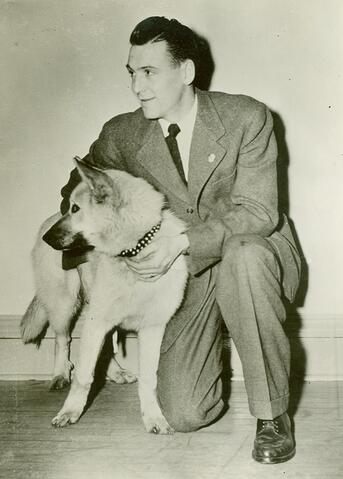
Zona do título e menção de responsabilidade
Título próprio
Sports - Mascots
Designação geral do material
- Material gráfico
Título paralelo
Outra informação do título
Título e menções de responsabilidade
Notas ao título
Nível de descrição
Item
Entidade detentora
Código de referência
Zona de edição
Menção de edição
Menção de responsabilidade da edição
Zona de detalhes específicos de materiais
Menção da escala (cartográfica)
Menção da projecção (cartográfica)
Menção das coordenadas (cartográfico)
Menção da escala (arquitectura)
Autoridade emissora e denominação (filatélica)
Zona de datas de criação
Data(s)
-
Feb. 1946 (Produção)
Zona de descrição física
Descrição física
1 photograph : b&w ; 15.5 x 11.5 cm
Zona dos editores das publicações
Título próprio do recurso continuado
Títulos paralelos das publicações do editor
Outra informação do título das publicações do editor
Menção de responsabilidade relativa ao editor do recurso contínuo
Numeração das publicações do editor
Nota sobre as publicações do editor
Zona da descrição do arquivo
Nome do produtor
História custodial
Âmbito e conteúdo
Unidentified man holding a husky dog, thought to be the first Huskie mascot.
Bio/Historical Note: Green and white were established as the official colors of U of S sports teams in 1909-1910, but the Huskies name did not appear at that time. Teams were generally referred to as “varsity” or “the green and white” when they played or appeared in media. The name “Huskies” began appearing in the 1930s, first in a September 1932 article in the StarPhoenix. Media caught onto the name and continued to use it; the name appeared in the 1932-1933 edition of The Greystone - the U of S yearbook at the time - along with a photo of the men’s hockey team in uniform with “Huskies” across the front. The origin of the Huskie name is unclear, but women’s teams were generally referred to as the “Huskiettes,” while men were the Huskies. On 15 Feb. 1946, The Sheaf printed a photo of an unidentified man holding a husky canine on campus, thought to be the first mascot. The husky appeared at various sports functions to lead the players onto the field and watch from the sidelines — on a leash. The late 1970s and early 1980s were the first time that the mascot appeared as a human dressed in costume. The women’s hockey team co-coach and trainer in the 1970s, Murray Gordon, began wearing a dog outfit and appearing at hockey games as “Hymie the Huskie.” Gordon also dressed up for football games and other campus events. The Huskie was generally accepted as the official mascot by this point, and appeared in 1980 on the men’s hockey team sweaters as a side profile of a dog’s head and neck. By the 1990s however, an outward-facing head of a dog appeared on all teams’ uniforms. The first official mascot costumes were created in the 1980s as well. A woman named Elva Finlay created a Huskies mascot costume in 1985 and restored a 1980 version of the costume that same year. The two new mascot costumes were worn by two university students, Lori Winter and Chris Mirwald, who attended U of S events and Huskie games. Today, the Huskies mascot is known as “Howler” and there are multiple people employed to dress in the Howler costume as the U of S mascot.

